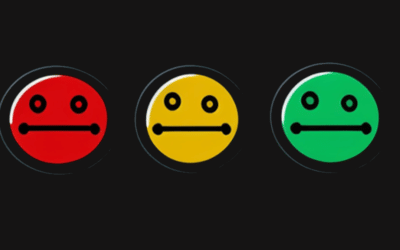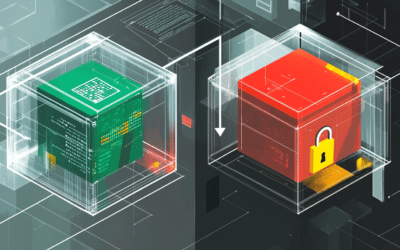
Bridging the Gap in IT Environments Management : Lower versus Upper Environments
November, 2023
by Jane Temov.
Jane Temov is an IT Environments Evangelist at Enov8, specializing in IT and Test Environment Management, Test Data Management, Data Security, Disaster Recovery, Release Management, Service Resilience, Configuration Management, DevOps, and Infrastructure/Cloud Migration. Jane is passionate about helping organizations optimize their IT environments for maximum efficiency.
In the dynamic world of software development, where speed, precision, and quality are non-negotiable, the effective management of IT and test environments is the linchpin that determines the success of projects. Environments serve as the critical stages where applications are born, tested, and prepared for deployment into the hands of end-users. However, within this realm, a distinct divide often emerges between “lower” and “upper” environments, each with its own unique challenges and priorities.
Innovate with Enov8
A Platform of Insight
Managing your IT & Test Environments, Releases & Data.
The solution to this challenge lies in Enov8 Environment Manager, a groundbreaking platform tailored to address the complexities of both lower and upper environments. This article delves into the intricacies of these environments, highlighting their differences, uncovering their shared attributes, and exploring the pressing priorities and challenges they present.
Understanding Lower and Upper Environments
In the intricate tapestry of IT and test environment management, two fundamental components stand out: lower environments and upper environments. These distinct segments serve pivotal roles in the software development lifecycle, each contributing its own set of functions and characteristics.
Lower Environments: The Foundation of Development
- Purpose: Lower environments are primarily dedicated to the early stages of software development. They are where developers write and modify code, conduct unit testing, and verify basic functionalities.
- Characteristics: These environments typically mirror production to a limited extent, replicating essential components and configurations. However, they may lack the scale, complexity, or real-world data of upper environments.
- Usage: Lower environments are predominantly used by development and testing teams to identify and rectify issues in the application’s codebase.
- Challenges: Managing lower environments can be challenging due to resource contention, data privacy concerns, and the need for rapid provisioning and deprovisioning to support various development and testing activities.
Upper Environments: Preparing for Production
- Purpose: Upper environments are designed for more comprehensive testing and validation. They serve as a staging ground for integration testing, performance testing, security testing, and other activities that simulate production conditions.
- Characteristics: These environments closely resemble the production environment, including configurations, data, and infrastructure components.
- Usage: Upper environments are utilized by cross-functional teams, including QA testers, integration specialists, and business stakeholders.
- Challenges: Managing upper environments can be complex due to the need for precise orchestration of multiple components, data synchronization, and ensuring that all configurations align with production standards.
Differences Between Lower and Upper Environments
Lower and upper environments, while interconnected in the software development lifecycle, diverge significantly in terms of their roles, characteristics, and functions.
Development vs. Validation:
- Lower Environments: Lower environments are primarily utilized for coding, debugging, and initial testing.
- Upper Environments: Upper environments are geared towards comprehensive validation, including integration testing, performance testing, security testing, and user acceptance testing.
Scope and Complexity:
- Lower Environments: Lower environments tend to be simpler in scope and complexity compared to their upper counterparts.
- Upper Environments: Upper environments aim to replicate production environments as closely as possible, including configurations, data, and infrastructure components.
Data and Configuration:
- Lower Environments: Lower environments may contain sample data and configurations but often rely on subsets or sanitized test data for testing.
- Upper Environments: Upper environments incorporate actual or realistic data sets and configurations to mimic production conditions accurately.
Testing Objectives:
- Lower Environments: Lower environments primarily focus on unit testing, code integration, and functional testing.
- Upper Environments: Upper environments facilitate more extensive testing, including integration testing, performance testing, security testing, and user acceptance testing.
Resource Utilization:
- Lower Environments: Lower environments are often easier to provision and maintain due to their simplified configurations.
- Upper Environments: Upper environments demand significant resources to replicate production-like conditions accurately.
Team Collaboration:
- Lower Environments: Development and testing teams collaborate closely in lower environments to identify and address code-level issues.
- Upper Environments: Collaboration expands to include cross-functional teams, such as QA, integration specialists, and business stakeholders.
Risk Mitigation:
- Lower Environments: Lower environments mitigate risks associated with individual code components and functionalities.
- Upper Environments: Upper environments focus on mitigating broader risks, including integration issues, performance bottlenecks, and security vulnerabilities.
Similarities Between Lower and Upper Environments
While lower and upper environments serve different stages of the software development lifecycle and possess distinct characteristics, they also share several common attributes and purposes.
Quality Assurance (QA) and Testing:
- Both lower and upper environments emphasize QA and testing to ensure software quality and reliability.
Version Control:
- Version control systems are crucial in both environments to manage code and configuration changes.
Compliance and Standards:
- Compliance with development guidelines, security policies, and industry-specific standards is essential in both environments.
Data Management:
- Data management, including data integrity and consistency, is crucial for accurate testing in both environments.
- Maintaining consistent configurations and preventing environment drift are priorities in both environments.
Collaboration and Communication:
- Effective communication and collaboration among teams are essential in both environments.
Risk Mitigation:
- Both environments contribute to risk mitigation, whether at the code level or in broader testing scenarios.
Priorities and Challenges of Lower Environments
Lower environments, often synonymous with development and testing stages of the software development lifecycle, present a unique set of priorities and challenges.
Priorities in Lower Environments:
- Rapid provisioning and availability for agile development.
- Code quality and unit testing to ensure code integrity.
- Data masking and privacy to protect sensitive information.
- Environment consistency to replicate production-like conditions.
- Resource allocation and contention management.
Challenges in Lower Environments:
- Balancing data privacy and realistic data needs.
- Resource constraints compared to upper environments.
- Maintaining environment consistency to prevent configuration drift.
- Resource proliferation and waste without proper booking management.
- Limited visibility and reporting, hindering decision-making.
Priorities and Challenges of Upper Environments
Upper environments, often considered the final stages of the software development and testing process before production deployment, come with their own set of priorities and challenges.
Priorities in Upper Environments:
- Integration testing to ensure component compatibility.
- Performance and scalability testing to identify bottlenecks.
- Security testing to uncover vulnerabilities.
- User acceptance testing (UAT) for business validation.
- Data accuracy and realism for comprehensive testing.
Challenges in Upper Environments:
- Resource complexity due to complex configurations.
- Data synchronization challenges between lower and upper environments.
- Orchestration and coordination for precise deployment.
- Resource constraints and allocation for testing activities.
- Visibility and reporting to track progress and issues effectively.
Bridging the Gap with Enov8 Environment Manager
Enter Enov8 Environment Manager, a powerful and innovative platform that is purpose-built to address the complexities and challenges of both lower and upper environments.
Unified Environment Modeling:
- Enov8 Environment Manager supports modeling and architectural blueprinting of lower and upper environments, ensuring accurate representation.
SDLC Awareness:
- The platform’s ‘SDLC Aware’ Configuration Management Database (CMDB) maps environments to delivery cycles, projects, and classifications for context.
Environment Health and Version Tracking:
- Enov8 helps track the health and version status of environments in real-time.
Collaboration and Communication:
- Environment and system calendars enhance collaboration among teams.
Booking Management:
- Enov8’s booking management capabilities help teams understand demand, control usage, and reduce resource proliferation.
Standardized Operations:
- The platform promotes standardized operations in both environments through Enov8 runsheets.
Orchestration and Pipelining:
- Enov8 Environment Manager streamlines environment and data activities through orchestration and pipelining.
- The platform supports robust deployment planning for smoother transitions to production.
Health Synthetics:
- Health synthetics proactively monitor environment health in both lower and upper environments.
Service Support:
- Enov8 offers inbuilt IT Service Management (ITSM) capabilities for efficient service support.
Customizable Insights:
- Organizations gain access to customizable insights into agility, cost, operations, and health status.
Benefits of Enov8 Environment Manager
Enov8 Environment Manager brings a wide range of benefits to organizations striving for efficient and effective IT and test environment management.
Enhanced Resource Utilization:
- Optimize resource allocation, reduce contention, and achieve cost savings.
Reduced Environment Drift:
- Maintain consistent configurations and versions across environments to reduce the risk of issues.
Lower Resource Proliferation:
- Gain insights into environment demand and utilization to reduce resource waste.
Streamlined Orchestration:
- Automate complex environment and data activities, accelerating the software development pipeline.
Improved Deployment Planning:
- Ensure smooth implementation of changes, minimizing disruptions.
Proactive Issue Detection:
- Detect and resolve issues early to prevent downtime and disruptions.
Comprehensive Service Support:
- Efficiently handle incidents, service requests, and issue resolution.
Customizable Insights:
- Make data-driven decisions with insights into various environment aspects.
End-to-End Governance:
- Align environments with the software development lifecycle and project requirements.
Compliance and Standardization:
- Adhere to compliance requirements and production standards.
Seamless Integration:
- Integrate with ITSM tools and other development and testing tools for a unified ecosystem.
Higher Quality Releases:
- Minimize the risk of production issues with comprehensive testing and validation.
Enhanced Visibility and Reporting:
- Gain visibility into the health, utilization, and issues in environments.
Conclusion
Enov8 Environment Manager serves as the transformative bridge between lower and upper environments in IT and test environment management. By unifying these critical components of the software development lifecycle, the platform empowers organizations to achieve end-to-end governance, compliance, operational standardization, and streamlined orchestration. As organizations continue to navigate the ever-evolving landscape of software development, Enov8 Environment Manager stands as a testament to innovation, adaptability, and efficiency. It equips organizations with the tools and capabilities they need to deliver higher-quality software releases, minimize production issues, and excel in the realm of IT and test environment management. With Enov8, the divide between lower and upper environments becomes a seamless path to success, ensuring that software development projects meet their objectives and delight end-users.
Relevant Articles
Data Mesh vs Data Lake: Choosing an Architecture
As organizations scale and mature their digital ecosystems, data becomes both a key asset and a major architectural challenge. Live by the data, die by the data. With vast quantities of structured and unstructured data pouring in from dozens (or hundreds) of...
RAG Status: What It Is and Using It for Project Management
Effective Leadership requires effective tooling to drive successful outcomes. One tool they can use to monitor and measure progress is RAG status. RAG stands for Red, Amber, Green, and is a simple traffic light system used to communicate the current status of a...
Enterprise Architecture Tools: 11 to Be Aware Of in 2025
Enterprise architecture (EA) is an essential discipline for organizations aiming to align their IT strategy with business goals. As companies become more complex and technology-driven, having the right set of EA tools is crucial to streamline operations, improve...
What is a Staging Server? An Essential Guide
Release issues happen. Maybe it’s a new regression you didn’t catch in QA. Sometimes it’s a failed deploy. Or, it might even be an unexpected hardware conflict. How do you catch them in advance? One popular strategy is a staging server....
What is Deployment Planning? A Detailed Guide
Deployment planning, sometimes referred to as "implementation planning," is the process of creating a plan for the successful deployment of a new software or system. It involves identifying the resources, tasks, and timeline needed to ensure that the deployment is...
The Definitive Guide to Test Data Generation
Test data generation is a critical part of the software testing lifecycle, ensuring that applications are tested against realistic scenarios before going live. If you’re not testing against production-like data, you’re arguably not truly testing your application. In...












